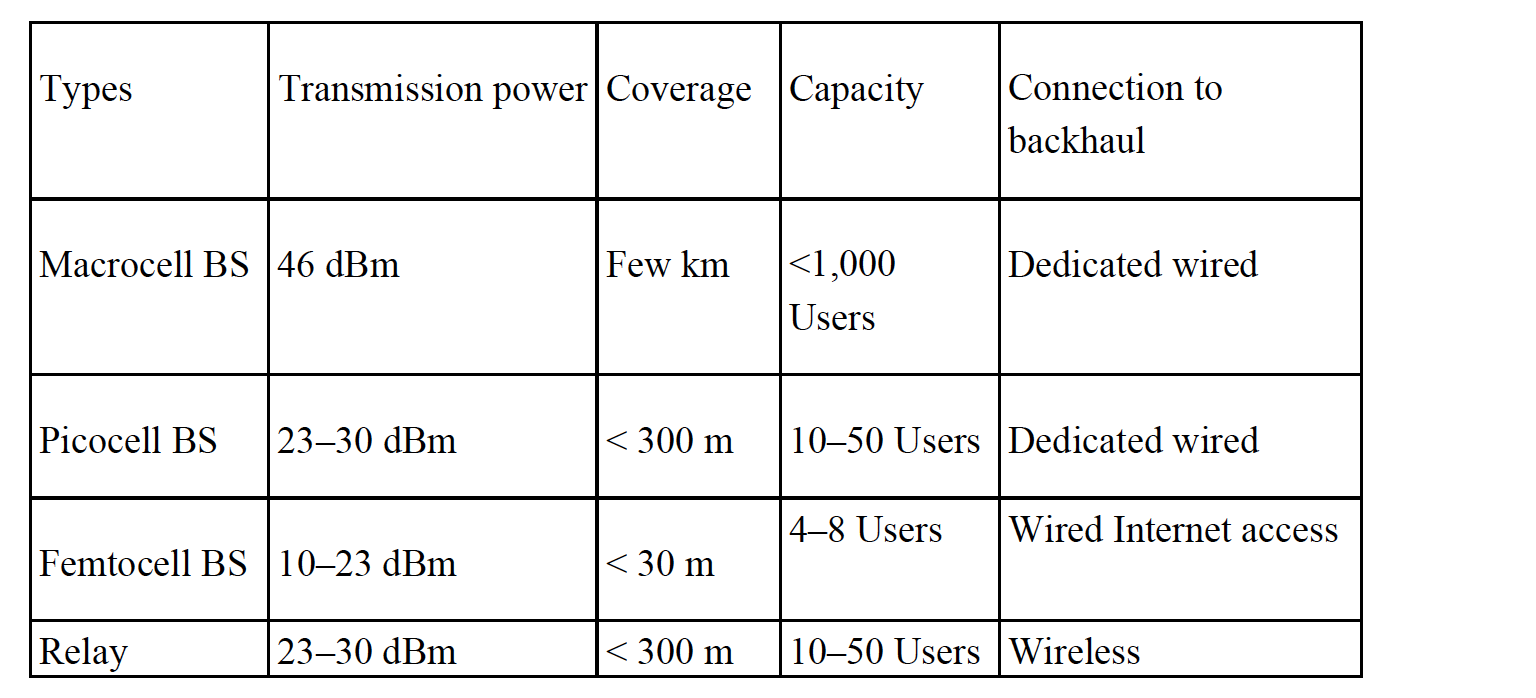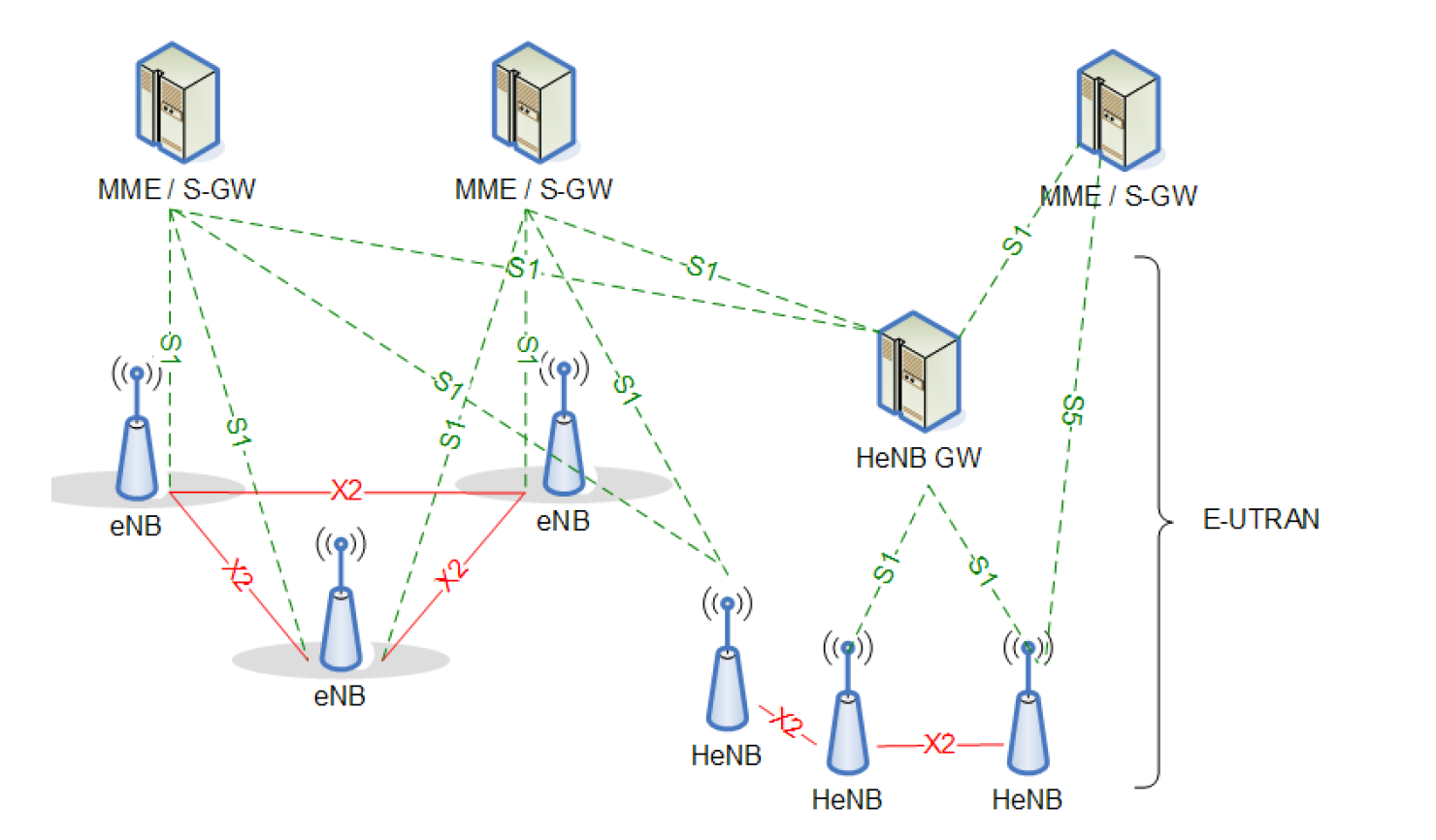Small cell concepts
Published:
This post covers Mobile and Wireless Networks by Khaldoun Al Agh, Guy Pujolle, and Tara Ali-Yahiya.
Basic Ideas
The Small cell concepts - Fundamental System Design
Different terms have been used by different operators to clarify and distinguish the low-power base stations. Small cell mobile technology is mostly operated in the same licensed spectrum as macrocells.
The most frequently nominated unlicensed small cell is WiFi, which provides certain features making it a valuable component of many operators’ mobile data strategies.
Picocell: Picocell coverage is formed through the use of a low-power node base station called a picocell base station (PBS). It is typically of a smaller order of magnitude to eNB, since PBS integrates an antenna radiating transmission power ranging from 23 to 30 dBm.
Omni-directional antennas installed for picocells are different from those used for MBSs sectorial.
Moreover, the operator can deploy picocells using the same backhaul and access features as classical eNBs.
Picocells can be deployed to fill macrocell gaps or to provide an extra data service where installed, typically in hotspots (for example, malls).
Femtocells: A femtocell, also called Home eNodeB (HeNodeB), is a lowpowe node base station installed by the end-user typically, in an indoor installation, and is an important part of HetNets.
It offers network operators a means of providing good indoor coverage for different types of traffic voice, video and high data services.
FBSs are connected to the network operator’s backhaul via a wired Internet connection such as Digital Subscriber Line (DSL), fiber optic or cable broadband access.
The use of femtocells offers several advantages to both the service operator and the end-user.
The most important aspect of femtocell design is the access mode mechanism.
Femtocells can be configured with three different types of access mode.
Relay nodes represent a low cost solution for extending macrocell coverage and/or improving the throughput of cell-edge users.
Unlike other HetNet nodes, such as picocells or femtocells, that are connected to the MBS through X2 or Internet backhaul connections, relay nodes (RNs) use a wireless link to connect to the MBS.
Generally, a RN can be considered as a access point that decodes/sends data or forwards/broadcasts information received from a base station in this case it is called Donor eNB (DeNB) or type-II RN, as it does not have a cell ID or a realistic mobility model (RMM).
A type-I RN is

Femtocell and macrocell integration architecture When there is an integrated architecture of femtocell and macrocells, we can consider a geographical area that is totally covered by LTE macro and femtocells. Within the macrocell, an eNB coordinates all data transmissions for UE while in each femtocell the HeNB is the principal entity controlling transmission in the cell.
Generally, a UE is able to connect to each network if it is in the corresponding coverage area and perfect power control is assumed to ensure a uniform transmission rate across the coverage area. The architecture used to integrate both macro and femtocells is illustrated in below figure.
The E-UTRAN, which is considered as an access network in the LTE network, permits us to connect the eNB and HeNB to their gateways.
The HeNB gateway or the S-GW routes and forwards user data packets between both networks through MME.
MME in our case can be considered a centralized entity that controls the resource allocation and interference mitigation between both networks.

Picocell and macrocell integration architecturePicocells are one of the key solutions which can be deployed efficiently in saturated areas and can improve the overall system capacity of a region covered by scarce macrocell penetration regardless the coverage type (indoor or outdoor).
Despite its benefits, the classical cell selection procedure, which is achieved by comparing and selecting the cell with the maximum received signal strength (RSS) as the user serving cell, introduces uneven traffic load distribution in the network, since most of the UEs connect to the MBS rather than the PBS.
Consequently, the macrocell is loaded, whereas the picocells are offloaded. To encourage traffic offloading from the macrocell to its overlaid picocells in a HetNet, cell range expansion has been widely envisioned, enabling more macro users to be offloaded to the less saturated picocells, enhancing the throughput performance of the entire system.
In order to overcome an inadequate picocell data offloading, the concept of cell range expansion has recently been introduced in 3GPP
LTE-A by defining a positive bias value to be added to the PBS RSS during cell selection. In this way, more MUEs are offloaded to picocells even if the RSSs of the selected picocells are below those of the macrocells
